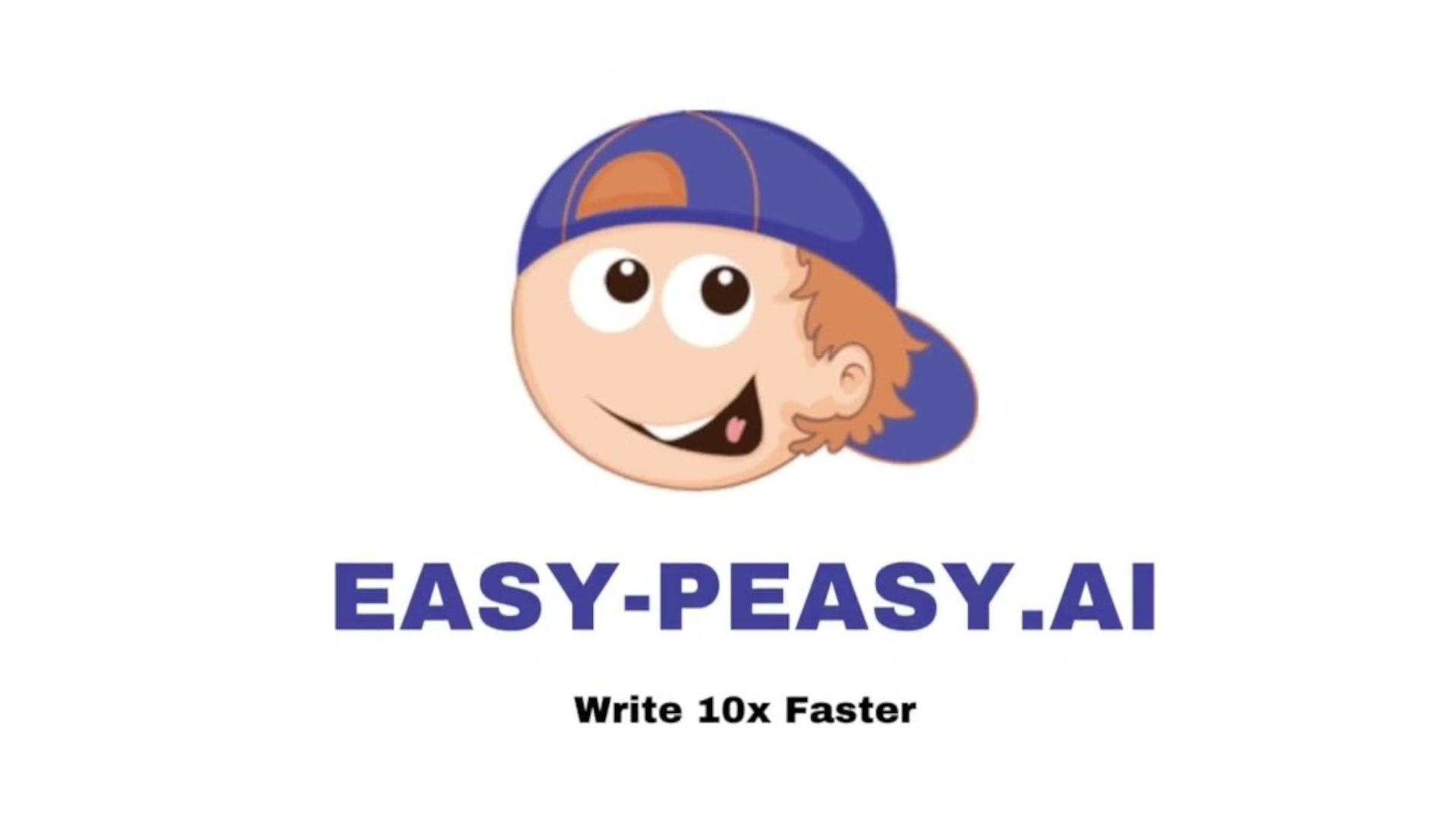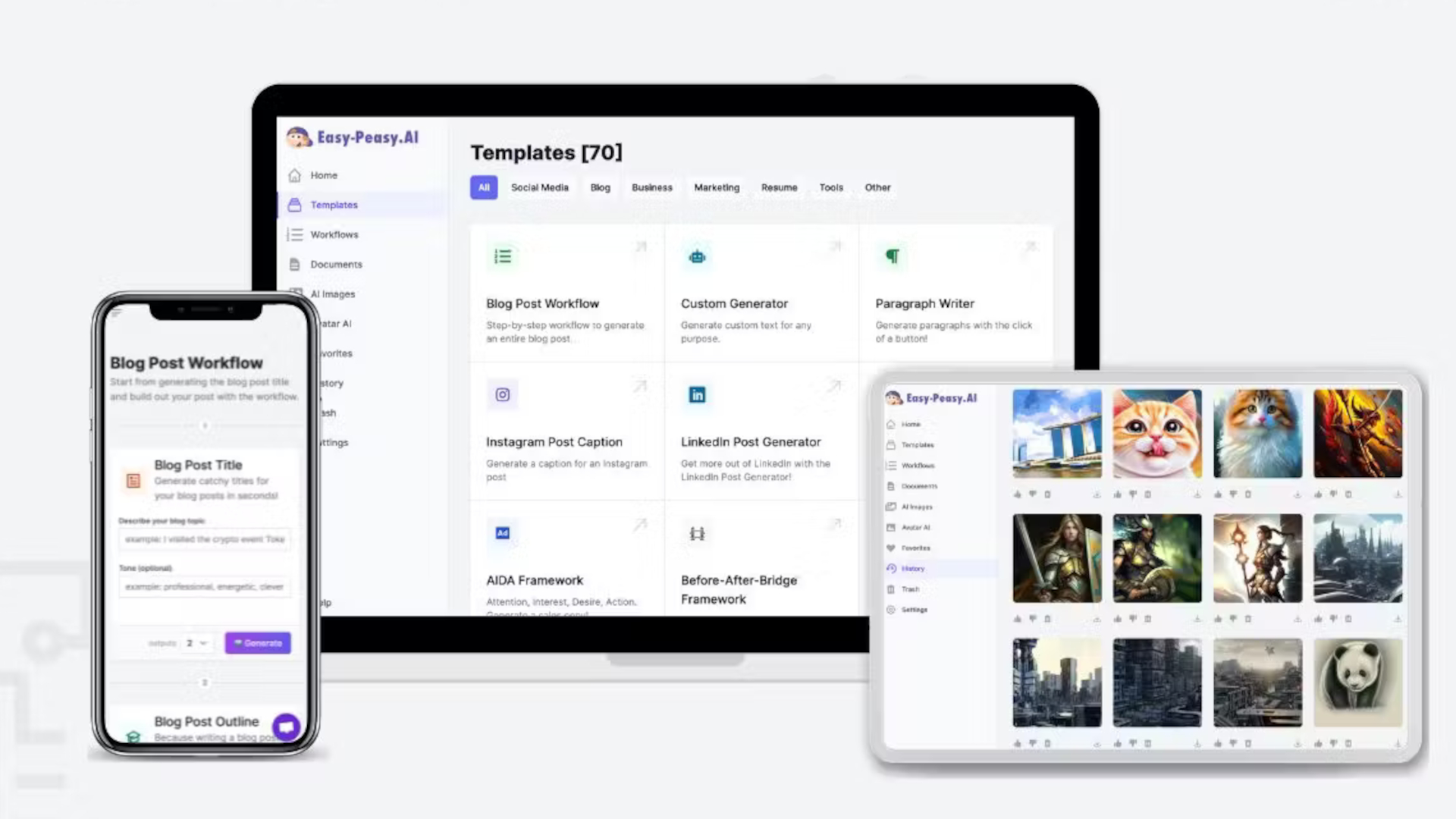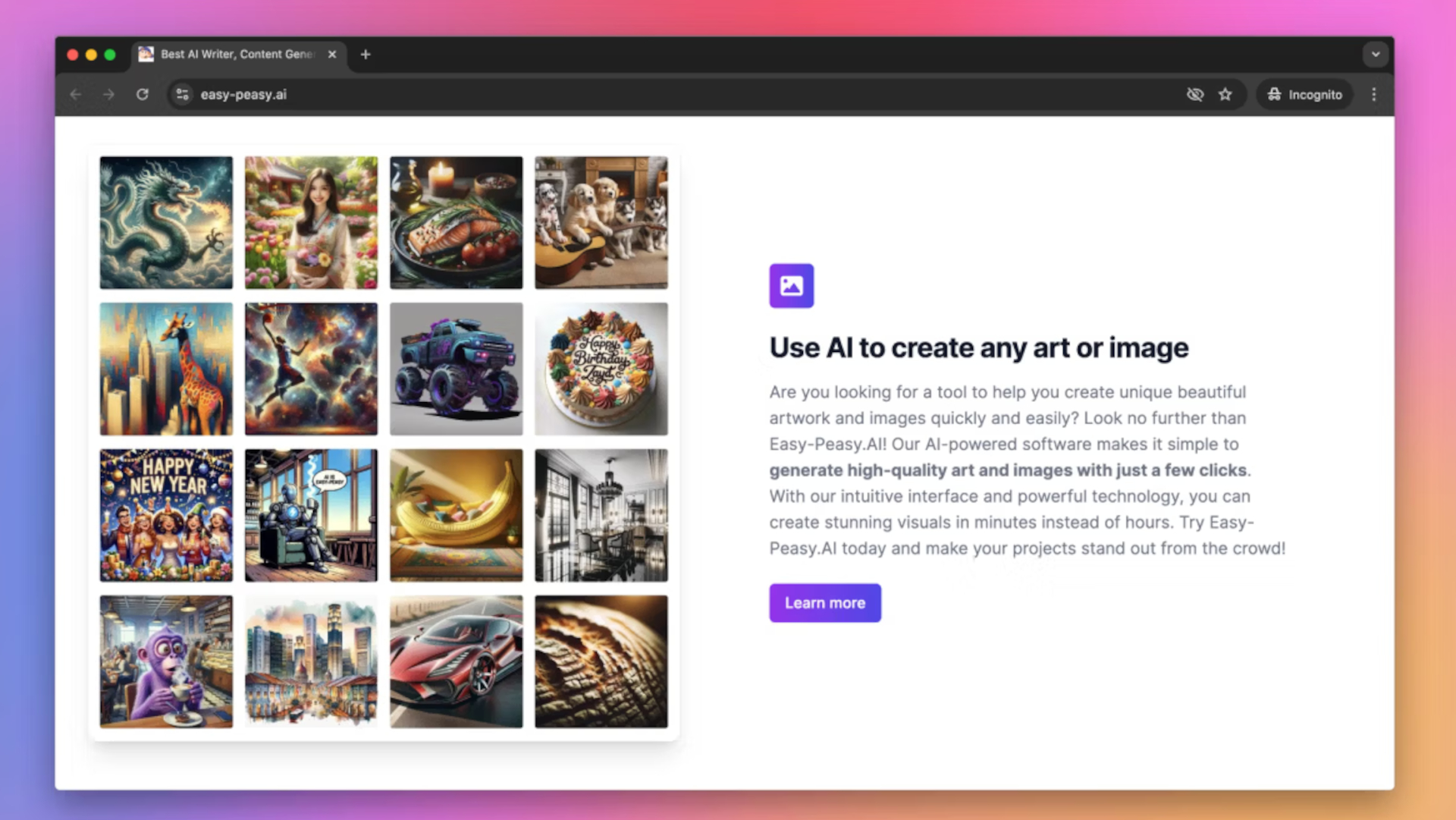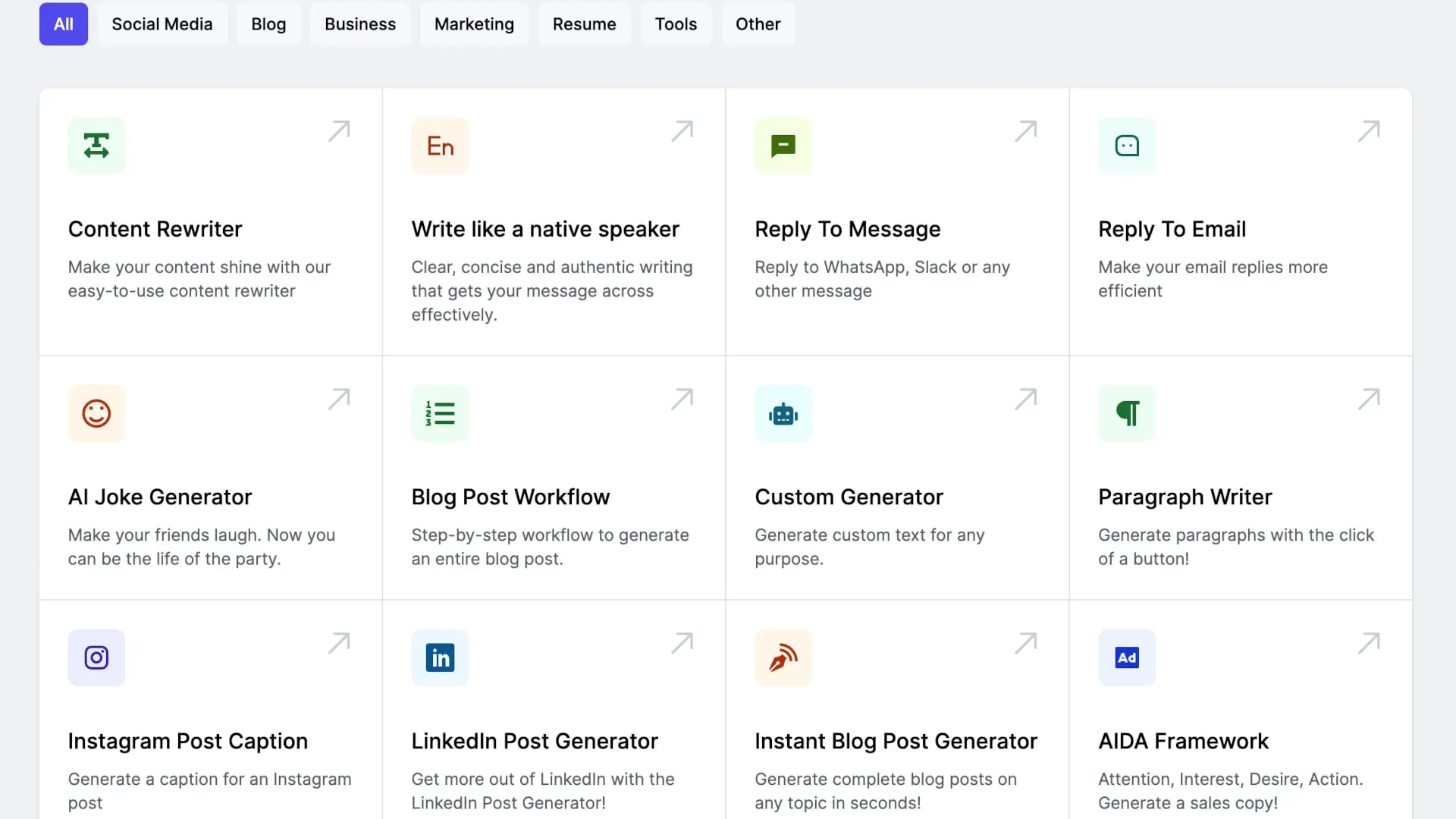What is Easy-Peasy.AI and How Can It Be Used for Teaching?
Easy-Peasy.AI puts lots of AI tools in one place, ideal for education

Easy-Peasy.AI is a do-it-all solution for AI tools, putting a whole host of features in one place. This gives it the potential to be a powerful educational aid for both teachers and students.
While there are plenty of single-purpose AI tools out there, such as ChatGPT for text or DALL-E for images, this offers lots in one workspace. It's a combination of chat, image- and video-generation tech as well as transcriptions, text-to-speech, and more. All of which are ideally suited to education.
It even offers a custom bot builder, which can be a great teaching assistant, both in the class as well as behind the scenes, to help with prep.
This guide aims to dive into the various tools to see just how well this can work as an AI assistant, so you can decide if Easy-Peasy.AI lives up to its name and could be of use in your class.
What is Easy-Peasy.AI?
Easy-Peasy.AI is what the company calls an "all-in-one AI solution." It combines various AI tools, each designed for specific tasks, into a single package.
The platform is unified by a point of contact called MARKY, which offers a chat interface similar to the likes of ChatGPT or Claude. But this differs by allowing you to switch between different AI models to perform specific tasks. Think of this as the Swiss Army Knife of generative AI tools.
From creating images to working with text, audio, and video, this can do lots of tasks. Crucially, it's also possible to train a no-code-needed bot of your own. Teachers can, for instance, upload course notes, textbook extracts, or exam specifications, and generate a classroom bot capable of answering curriculum-specific questions.
Tools and ideas to transform education. Sign up below.
It also features more than 200 writing and content templates, for summarizing, rewriting, scripting videos, crafting social posts, or generating assessment items. Add to that text-to-speech, speech-to-text transcription, AI image and video generation, and you can see how this can be a very powerful class assistant.

How does Easy-Peasy.AI work?
Easy-Peasy.AI is powered by ChatGPT-4, Claude 3, Gemini, and more -- all working behind the scenes to use the best AI for the task that's required. So the MARKY interface effectively works like a conductor, helping the band of other AI tools orchestrate the jobs needed at any one time.
The creative tools are a helpful way for teachers to create original, rights-free materials for use, from images to videos. This can be great as a way to create concept visuals or storyboards for lessons -- using imagery and video to help add depth to ideas.
The functions sit on a dashboard for a consistent layout that can mean the learning curve is not steep at all. And since this is all cloud-based, operating through a single machine, it can be easy to get started and stay secure with no installation or storage needed. Consequently, it can be used across Chromebooks, laptops, and tablets easily.
So while you can interact with MARKY, uploading a doc and asking it to summarize for grade 8, for example, this also lets you build bots to help students work on a certain project with answers that save you time on repeating yourself across the class.

What are the best Easy-Peasy.AI features?
Easy-Peasy.AI does a lot, all in one place, but it's the custom bot creation that might be one of the most stand-out features.
Being able to upload course documents and instantly offer a subject-aware Q&A assistant opens lots of possibilities. Imagine a math revision bot trained on past papers, or a classroom policy explainer for new parents.
The file-aware chat is also helpful, letting teachers upload a document and then work with the AI on it. You can simplify the language, extract main ideas, or even create a quiz from the content.
The text-to-speech and rewriting tools can simplify reading materials or produce accessible audio versions of content, ideal for making sure everyone in the class can access what's being taught.
Students can also get use out of the multimodal generation tools as they could design visuals for a digital storytelling project, generate a narrated script, or turn notes into short explanatory videos.
Teachers can easily use this all to draft lesson plans, create email templates, or brainstorm classroom discussion prompts. Then, usefully, this can be connected to other tools such as Zapier and API integrations, to feed into the school LMS, newsletters, and more.

How much does Easy-Peasy.AI cost?
Easy-Peasy.AI offers a free plan as well as a tiered subscription model for deeper access.
The Free plan gets you access to core tools such as chat, templates, limited transcription, and image generation -- all with daily or monthly usage caps.
The Pro plans range from $15 to $30 per month, and these add in higher limits, faster model access, and premium features such as video generation or greater data upload capacity.
An Enterprise tier for schools is charged bespoke, which adds in administrative controls, shared workspaces, and custom API access.
Easy-Peasy.AI best tips and tricks
Start with a single, clear purpose.
Don’t try to use every feature immediately. Pick one pain point -- summarizing readings, generating images, or offering text-to-speech support -- and master that before expanding.
Use custom bots for revision
Train bots on your curriculum documents, and let students query these during revision periods. It’s a controlled, curriculum-aligned way to offer on-demand help.
Teach prompt literacy
Use Easy-Peasy.AI as a platform for teaching how to ask good questions. Show students how refining a prompt (“Explain photosynthesis as if teaching a 10-year-old”) changes output quality.
Enjoy our content? Make sure to add Tech & Learning as a preferred source on Google to keep up with our latest news, how-tos, profiles, events, and more.
Luke Edwards is a freelance writer and editor with more than two decades of experience covering tech, science, and health. He writes for many publications covering health tech, software and apps, digital teaching tools, VPNs, TV, audio, smart home, antivirus, broadband, smartphones, cars and much more.
